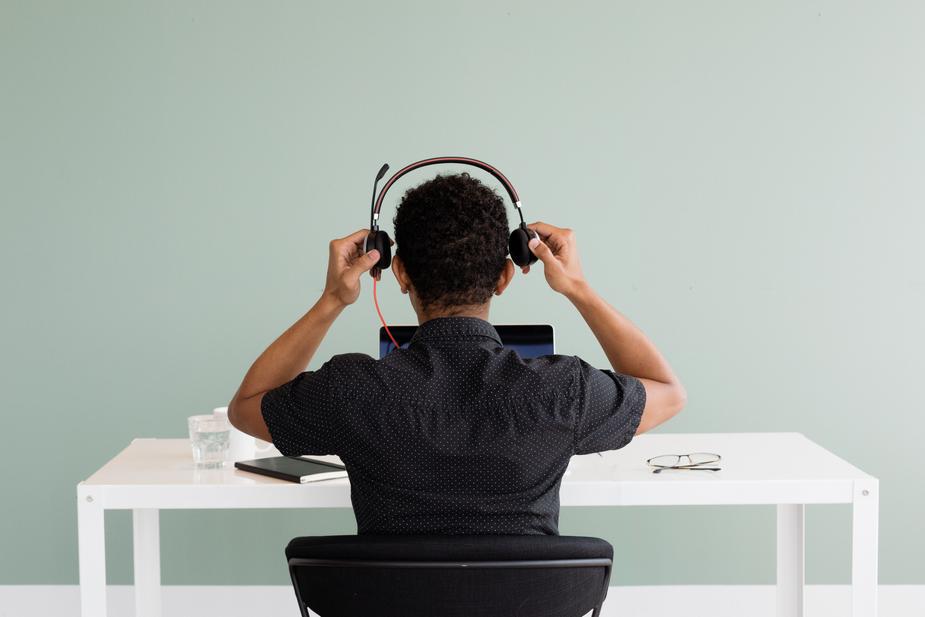Open offices and coworking spaces might be taking over the world, but privacy is still essential for surefire productivity. Unlike the cubicles of the past, however, privacy in the modern age is manifesting in more flexible, creative ways.
If you’re managing a team, understanding these trends is key to helping your employees perform their best. Here’s what you should know about creating more private, adaptable workspaces in the office.Why Privacy Still Matters
Office design has a lasting impact on employee productivity and morale. But what kind of office design is best for promoting productivity? A University of Arizona study found that workers in open space offices, with no separating barriers between colleagues, had greater physical activity than those who worked in cubicles and private offices. This is likely due to the fact that people who work in offices with open bench seating are socializing more with peers, which might require getting up and walking around often. This increase in activity led to decreased stress levels both personally and professionally among people in the study, UA College of Architecture, Planning and Landscape Architecture’s marketing and communications coordinator Cindy Rupp Valdez adds, showing that interaction with peers can help people feel happier in and out of work. On the other hand, Grace Dobush at Fortune Magazine points to a Harvard study which says that people who work in open offices are actually less likely than cubicle dwellers to collaborate with colleagues. This suggests that open offices may not necessarily promote more social interaction — or the accompanying wellbeing — they’re supposed to. While the debate about open offices remains uncertain, most people agree that noisy, busy offices hinder productivity and efficiency. Digital marketing consultant Daniel Scalco says that phones, coworker conversations and other office noises can be a persistent distraction from basic tasks, decreasing cognitive performance and contributing to overstimulation. When people are constantly being interrupted by noise around them, they simply can’t get their work done. Another negative impact of too much noise in the office is that it can cause stress and anxiety. According to wellness coach Elizabeth Scott, noise has been found to trigger the body’s stress response. This results in increased stress hormones in the body — the main contributor to chronic stress. She refers to a Cornell University Study which found that workers chronically stressed by noise pollution are “less likely to ergonomically adjust their workstations for comfort.” This results in increased physical pain and poorer overall health. Moreover, Caroline Forsey at HubSpot writes that employees working in generic open floor spaces have some of the highest levels of emotional exhaustion. Personalizing low-privacy spaces can help. Lockers or a team meeting room with personal touches can go a long way towards making employees feel more comfortable.Creating More Options for Privacy
It’s clear that noise can hamper productivity in the office, but it’s also true that today’s workers aren’t ready to return to cubicle life. So how can employers strike a balance? It’s all about choice, Rebecca Charbauski at furniture provider Steelcase says. Specifically, employers need to add options for creating quiet, private spaces to the workplace. Just like dimming the lights or turning up the heat, privacy settings allow employees to create a more comfortable environment to work in. This nurtures individual needs by supporting a stronger balance between privacy and collaboration. “When you have the best place to do your job, it helps you to be more efficient, less stressed and more satisfied with your job.” Catherine Arod-Gall, VP Strategic Markets and Alliances at Steelcase, puts it. Certain tasks might require hyper focus, while others will benefit more from a fluid and collaborative approach. To ensure you’re targeting employee needs, ask them what they want — and then create that flexible working environment where they can be productive. Elizabeth Dukes, iOFFICE cofounder agrees. She suggests creating a survey asking team members about their working preferences. This can assess what people enjoy about the workspace and where they’d like to see improvements. It also creates a sense of ownership and helps them feel involved.
Furniture and Walls
Furniture is another way modern offices are achieving privacy within open floor plan environments. The privacy lounge from Poppin, for example, features two high-backed comfortable chairs with fluid curves that deflect sound and boost either individual concentration or one-on-one conversation. Simply creating multiple seating options can help people feel more in control of their workspace, too. These might include open spaces for collaboration, private spaces for focused work, conference and huddle rooms of varying sizes in addition to adequate community space for socializing and breaks, employer brand manager Nicole Cantley explains. Having outdoor spaces to spend quiet time in, such as picnic tables, grassy lawns and walking trails, is also a great way to help people enjoy peace and quiet away from a noisy office. There are some employees who will always require peace and quiet in order to be productive. At the same time, some people thrive on having other creative minds to brainstorm with nearby. On the Hello Monday creative agency blog, writer Johanna Cider stresses that it’s important to cater to both of these working styles. Flexible office environments, including furniture and acoustics, should really be considered at the beginning of any office plan. Outfitting your office with flexible privacy pods can make it even easier for employees to customize private spaces. Stephanie Rogers at Web Urbanist showcases a unique innovation called the Noise Canceling Introvert Helmet. This is a hanging felt headpiece that a person sit under, greatly reducing excess noise and keeping peripheral distractions at bay. When you’re modifying an existing space, moveable barriers, dividers or walls can help you maximize existing boundaries. Instead of fixed walls, business journalist Lin Grensing-Pophal writes, organizations can use moveable ones that allow for different types of privacy. Privacy pods can be incorporated into these flexible environments and moved around on demand. While accommodating the working preferences of employees, flexible walls also make it easier for the organization itself to grow and adapt.
